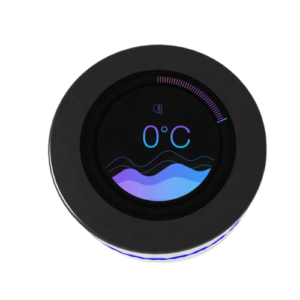Which is better? Micro OLED or OLED?
Are you struggling to pick the right display for your next project? Confused about Micro OLED and OLED, and can’t decide which one fits? Let’s
If you want to know more information about the LCD industry, we will update more details. There posts are not to be missed.
Are you struggling to pick the right display for your next project? Confused about Micro OLED and OLED, and can’t decide which one fits? Let’s

Introduction to Small TFT LCD Displays If you’re looking for a small, compact, and cost-effective display solution, then Small TFT LCD Displays are ideal. With

Introduction: Mutual capacitive touch screens are constructed by forming horizontal and vertical electrodes on the surface of the glass using ITO (indium tin oxide). Unlike

Today, we stand at the forefront of a new era in interface design, where circular TFT LCD knobs offer a seamless blend of tactile feedback and dynamic display capabilities. With sizes ranging from 1.28 inches to 2.1 inches, these knobs provide ample real estate for intuitive interaction while maintaining a compact form factor.

Capacitive touch screens, known for their high sensitivity, good transparency, strong stability, long lifespan, and support for multi-touch, are the mainstream technology widely applied in smart consumer electronics, industrial medical equipment, smart homes, office equipment, and automotive electronics. Capacitive touch screens can be further classified into external and embedded types.

In our daily life, most LCD products are square or rectangular, while relatively speaking, circular screens are relatively few. However, in recent years, with the

On cell adds a touch layer, and the thickness will be increased to a certain extent, and the display effect is limited. In cell embeds a touch sensor in the pixel, and the area that can be used for display will be reduced, which will lead to image quality degradation to a certain extent. However, this is not a serious problem and can be compensated by using a touch chip. If it goes on like this, either G + G or G + F, or OGS will eventually be replaced by on cell, while on cell is only the transition of in cell, and only in cell will survive in the end.

Whatever TN LCD/STN screen, they usually have two display types: positive display type and negative display type. Today, I am going to use segment display and PMOLED display as examples to show you the differences between positive and negative liquid crystal displays.

Transparent display screen, which belongs to a new type of liquid crystal display screen, the light transmittance is 10% to 15% when it is not powered on, and the light transmittance is as high as 90% when it is installed with lighting showcases when powered on.
WhatsApp us